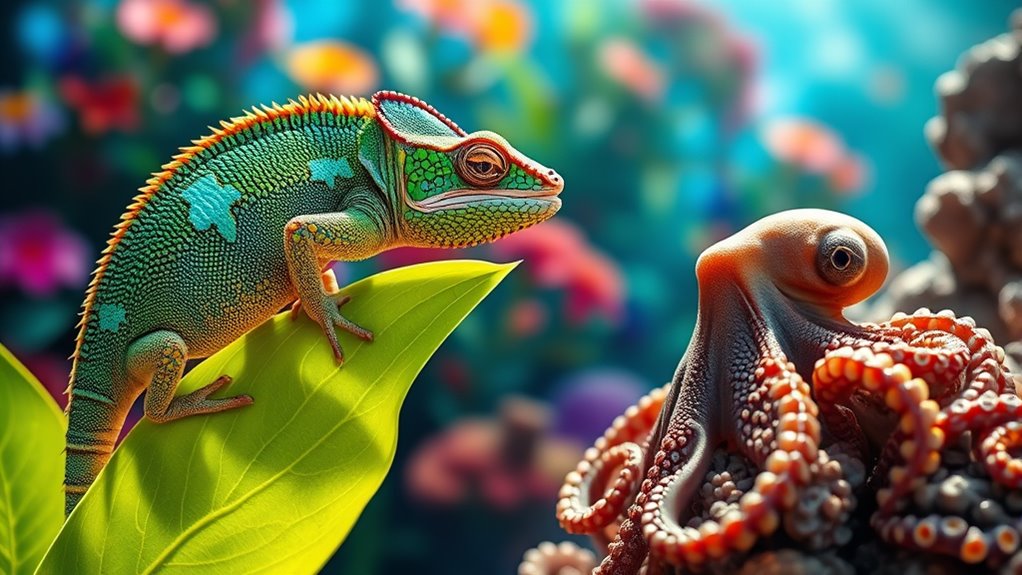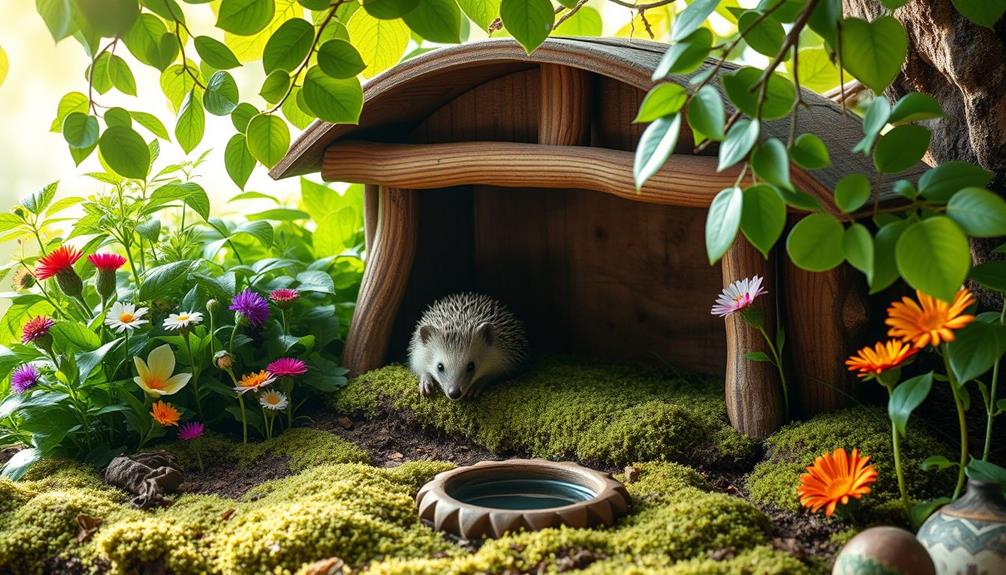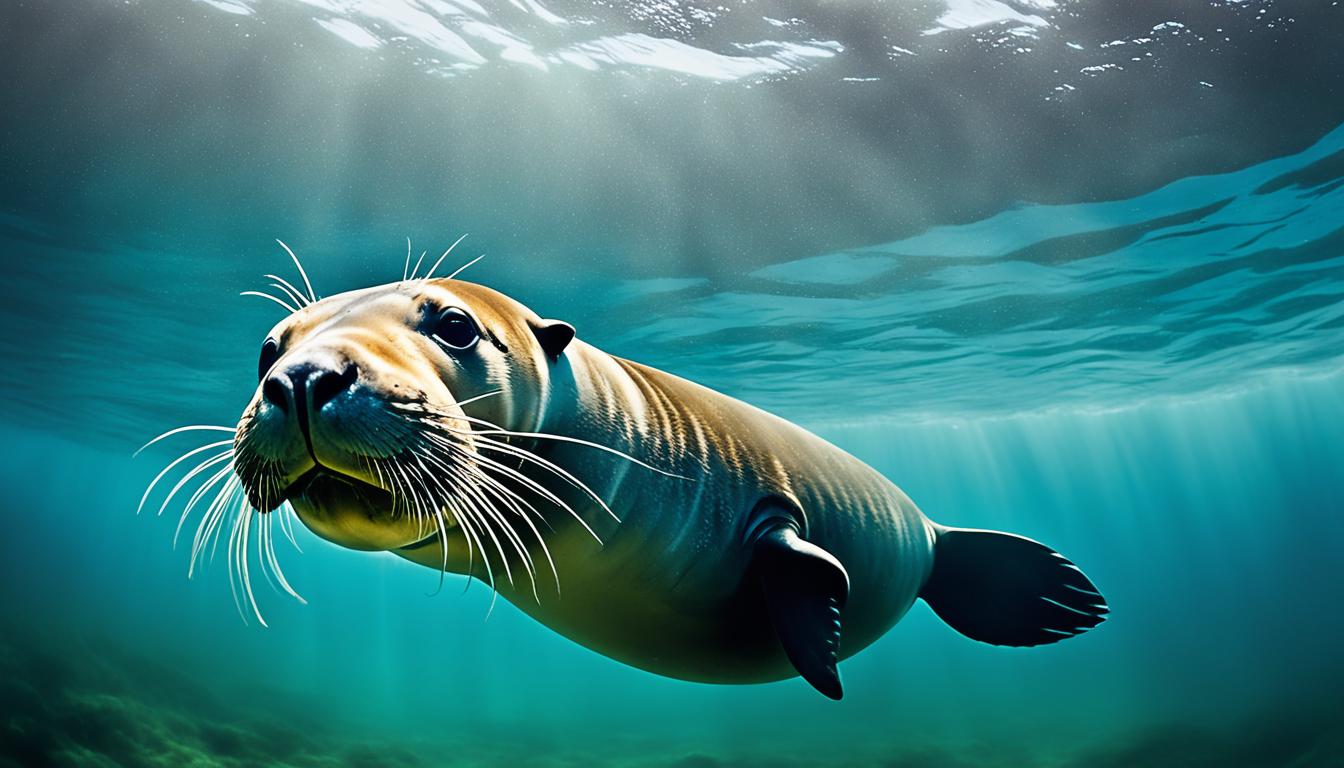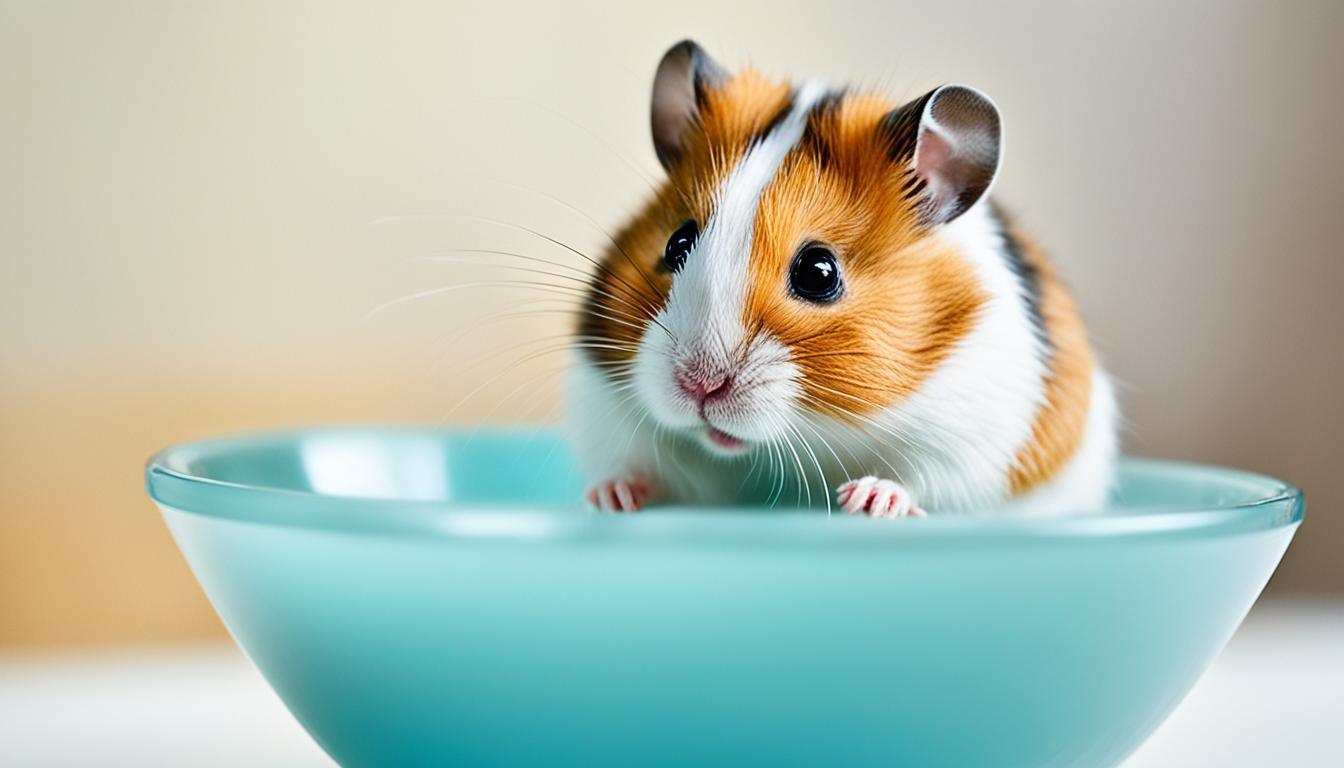Animals change color to survive, communicate, and adapt to their environments. They use specialized cells called chromatophores to quickly alter their appearance for camouflage, signaling, or temperature regulation. Seasonal changes can prompt color shifts for better blending in with surroundings. For instance, chameleons and cephalopods are masters of rapid transformation, enhancing their survival chances. Color change also plays a role in mating displays and social interactions. Discover more fascinating reasons behind these adaptations and their significance.
Key Takeaways
- Animals change color primarily for camouflage, enhancing survival by blending into their environments to avoid predators or ambush prey.
- Seasonal adaptations in coloration help animals regulate temperature, with lighter colors reflecting sunlight in warmer months and darker colors absorbing heat in winter.
- Rapid color changes enable communication among species, signaling dominance, aggression, or readiness to mate through visual displays.
- Chromatophores, specialized pigment cells, facilitate quick color changes in animals like chameleons and cephalopods for various purposes.
- Environmental factors such as temperature and light influence color change mechanisms, allowing animals to adapt to their surroundings effectively.
The Mechanisms Behind Color Change
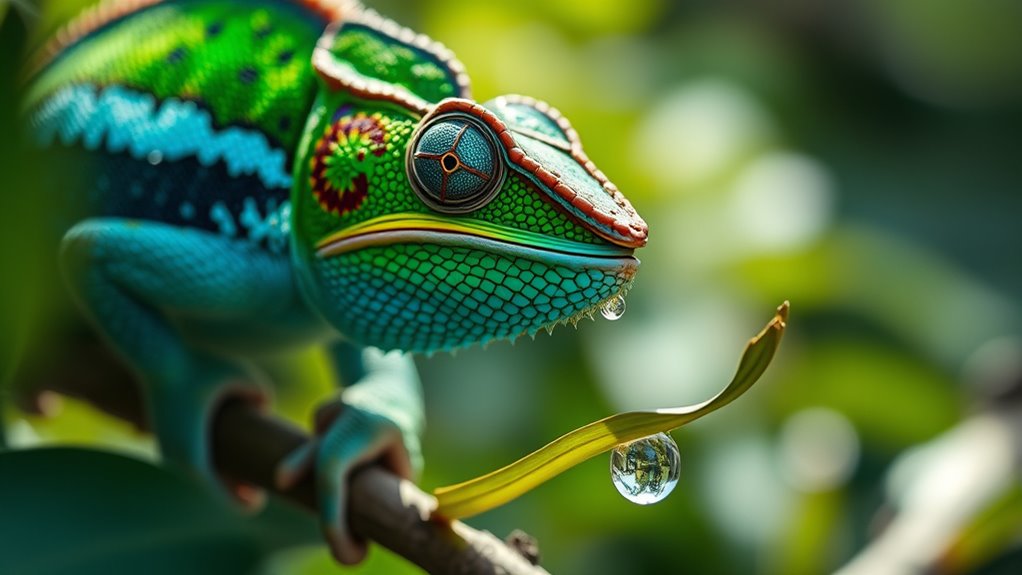
When you observe animals changing color, it's fascinating to realize that this ability hinges on specialized cells known as chromatophores. These cells contain various pigments that allow for rapid color change, essential for survival.
The remarkable ability of animals to change color relies on chromatophores, specialized cells vital for their survival.
In cephalopods, chromatophores are pigment-filled sacs controlled by muscle fibers, enabling swift adjustments in size and shape, perfect for camouflage or signaling. Environmental factors like temperature and light influence these mechanisms, as animals process sensory information to adapt.
Additionally, some creatures, like the golden tortoise beetle, manipulate fluid within transparent shells to alter reflectivity, switching between metallic gold and red.
This intricate interplay of chromatophores not only showcases nature's creativity but also highlights the importance of color change in the animal kingdom.
Seasonal Adaptations in Coloration

As seasons change, many animals adapt their coloration to blend seamlessly with their environment, enhancing their chances of survival. One prime example is the rock ptarmigan, which shifts from brown feathers in summer to striking white plumage in winter. This seasonal adaptation provides excellent camouflage against snow, helping it evade predators.
Over 20 species in the northern hemisphere undergo similar color changes, triggered by hormonal signals that prompt fur or feather turnover. These adaptations also aid in thermoregulation; darker colors absorb heat during colder months, while lighter hues reflect sunlight when it's warmer.
Rapid Color Changes in Animals
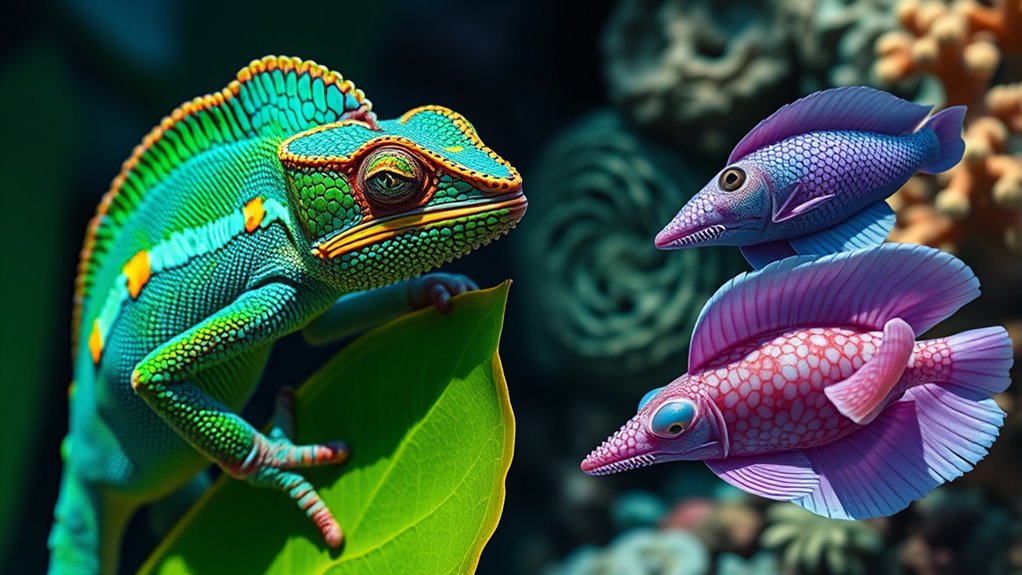
While many animals exhibit seasonal color changes for camouflage, others can rapidly alter their hues in response to immediate stimuli.
Chameleons, for instance, utilize specialized cells called chromatophores to change colors in under 30 seconds. Cephalopods, like octopuses and squids, excel in rapid color change, thanks to their chromatophores containing pigment-filled sacs, allowing for dramatic shifts in both color and texture.
The chameleon sand tilefish can even change colors in half a second due to adrenaline. Male reef octopuses quickly shift coloration to signal mating readiness, while golden tortoise beetles manipulate fluid in their shells to convert from metallic gold to red.
These fascinating animal species showcase various forms of color adaptation and communication through their remarkable abilities.
Camouflage and Its Importance

Camouflage serves as an essential survival strategy for countless animals, enabling them to blend seamlessly into their surroundings and evade predators.
The Arctic fox and willow ptarmigan exemplify this, changing color with the seasons—sporting white fur in winter for snow camouflage and brown in summer to match the earth.
Cephalopods like octopuses and cuttlefish use chromatophores to rapidly alter their color and texture, enhancing their camouflage against various backgrounds.
Key strategies include background matching and disruptive patterning, which help these animals avoid detection.
Seasonal adaptations, such as the rock ptarmigan's plumage changes, rely on hormonal signals responding to environmental cues, ensuring they maintain effective camouflage throughout the year.
This ability greatly boosts their chances of survival.
Communication Through Color Change
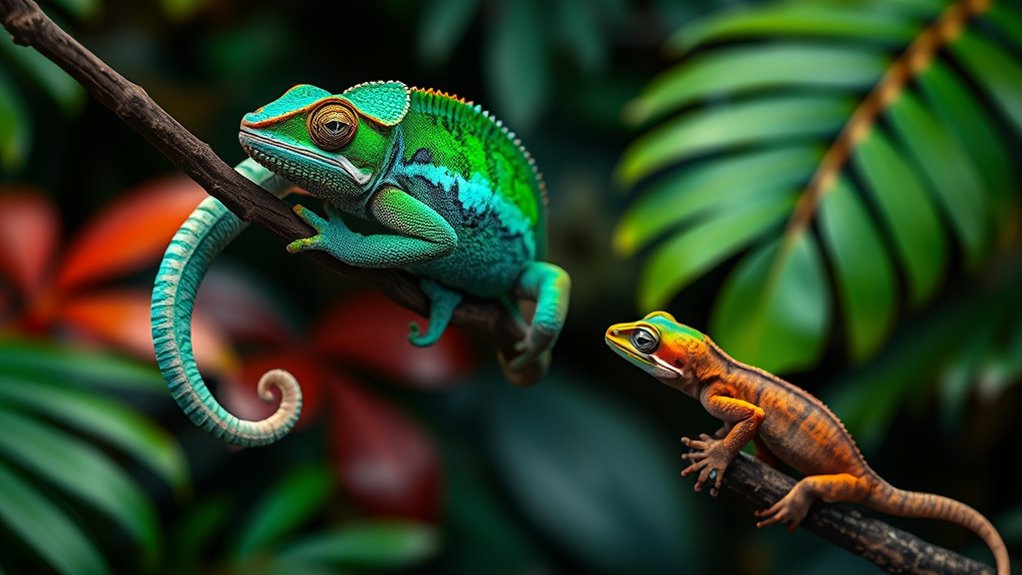
Color change isn't just about blending in; it also plays an important role in communication among various animal species. For instance, Trinidadian guppies shift their eye color to black as a warning signal during food competition.
Male chameleons display vibrant colors to assert dominance and attract mates, using hues to convey their health. Octopuses utilize dark colors to indicate aggression, serving as a visual cue in social interactions.
Additionally, color change can signal emotional states, allowing chameleons to express stress or relaxation. This ability enhances social interactions by informing others about individual status and readiness to mate, ultimately influencing dynamics within animal communities.
The Role of Color in Mating Displays

When it comes to mating displays, color plays an essential role in attracting partners. Bright hues often signal health and vigor, making males more appealing to females.
You'll see this in various species, where color variations not only help in courtship but also communicate dominance and fitness.
Visual Signals for Attraction
While many animals rely on various strategies for attracting mates, vibrant color displays play an indispensable role in these rituals.
For instance, male panther chameleons showcase bright colors like reds and blues to attract females, signaling their health and liveliness. Similarly, animals use colour changes during mating rituals to convey messages about genetic quality.
Male giant cuttlefish impress potential mates with intricate patterns, while Trinidadian guppies shift their eye color to black, indicating strength.
Octopuses also utilize color changes to express emotions, signaling aggression or submission.
These visual signals not only help attract females but also demonstrate fitness and dominance, making bright colors an important part of the animal kingdom's mating strategies.
Color Variations and Health
Vibrant hues in animal species often reveal essential information about health and vitality, influencing mate selection during the breeding season.
When you observe color change in males, such as the brightness of a panther chameleon, it often signals their fitness and genetic quality. Females tend to prefer males with vivid colors, as these traits correlate with lower parasite loads and better overall health.
For instance, male giant cuttlefish showcase vibrant patterns to communicate their reproductive status, attracting potential mates. The intensity of these color displays reflects not only nutritional status but also environmental adaptability.
Consequently, color variations play a significant role in mating displays, ensuring that the healthiest individuals successfully pass on their genes.
Mating Strategies and Displays
Color not only serves as a visual spectacle in the animal kingdom but also plays an essential role in mating strategies. Males like panther chameleons showcase vibrant colors during mating displays, indicating their health and vitality to attract females.
Trinidadian guppies change their eye color to black, enhancing their visibility to potential mates while signaling competition. In species like the male giant cuttlefish, elaborate displays of color signal dominance and allure females during the breeding season.
Color change isn't just for attracting mates; it's important for communication, with specific colors signaling aggression or readiness to mate.
Ultimately, vivid colors play a significant part in sexual selection, helping males stand out and secure their reproductive success.
Frequently Asked Questions
What Causes Animal Fur to Change Color?
Animal fur changes color due to hormonal signals that affect specialized cells called melanophores, which manage melanin distribution.
Seasonal changes trigger adaptations, like how the rock ptarmigan shifts from brown to white for winter camouflage.
Environmental factors, such as light and temperature, also play a role, influencing chromatophores for rapid color changes.
Additionally, some animals alter their fur color in response to emotions or social interactions, using it as a form of communication.
What Are 3 Animals That Can Change Color?
You can find several fascinating animals that change color.
Chameleons are famous for their rapid color alterations, using specialized cells to reflect light.
Cephalopods like octopuses can change their appearance quickly to blend into their surroundings or communicate.
The rock ptarmigan also showcases seasonal changes, sporting brown feathers in summer and shifting to white in winter for camouflage.
These unique adaptations highlight nature's incredible versatility and the need for survival in different environments.
How Do Animals Know What Color to Change?
You know what they say: "When in Rome, do as the Romans do."
Animals respond to their surroundings by detecting environmental cues through their senses. Their brains process information about background colors, predators, or potential mates. Hormonal signals trigger color changes, enabling quick adaptations.
Specialized cells called chromatophores help animals adjust their pigments. This way, they can effectively blend in or express emotions, responding dynamically to their ever-changing environments.
Why Do Some Animals See Different Colors?
Some animals see different colors because they've unique types and numbers of photoreceptor cells in their eyes.
You might find that birds can perceive ultraviolet light, which is invisible to you.
Creatures like mantis shrimp possess up to 16 types of photoreceptors, allowing them to experience an exceptional color range.
This enhanced vision aids in finding food, avoiding predators, and communicating, giving them an advantage in their specific environments.
Conclusion
In the vibrant tapestry of nature, animals change color not just for survival but also for connection. While some shift hues to blend into their surroundings, others flaunt bright displays to attract mates or signal danger. This duality—camouflage versus communication—shows how dynamic life can be. Embracing both the need for safety and the desire for interaction, these creatures remind us that adaptation isn't just about survival; it's also about thriving in a world full of color and complexity.
